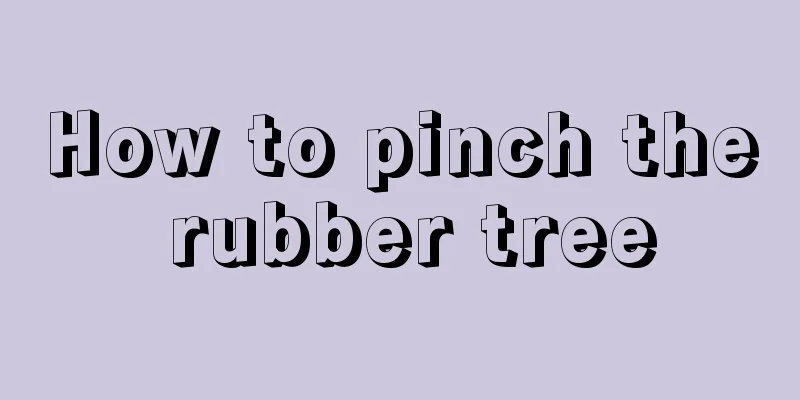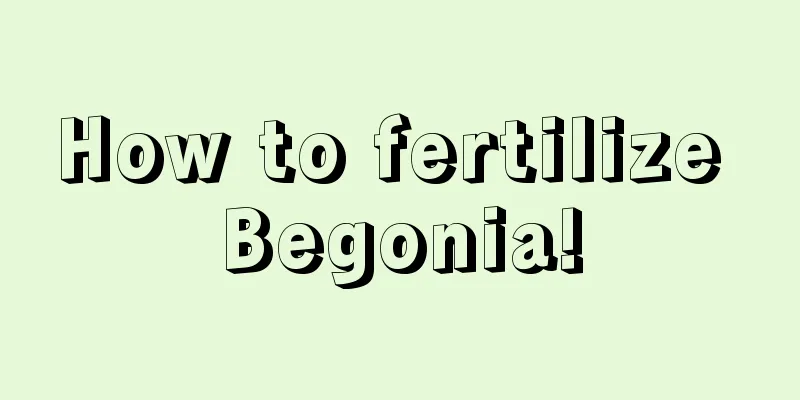If you grow jasmine like this, it will bloom as many times as you want!

Daily care for jasmine flowersIf you want jasmine to bloom fragrantly and white, the most important detail that cannot be ignored is daily maintenance. 1. SunbathingThere is a saying among flower lovers, "Jasmine can't be killed by the sun", which means that jasmine is not afraid of the sun at all. Even though the temperature is now about to soar to 40℃, jasmine is still placed on the south balcony to continue to be exposed to the sun, and the more it is exposed to the sun, the more fragrant the flowers become. Therefore, it is necessary to ensure that jasmine receives at least 5 hours of light every day. 2. Water moreThe prerequisite for letting jasmine bask in the sun all day is to give it sufficient water. Jasmine is not drought-tolerant, but water cannot accumulate in the pot. Don't let it get wet when it rains. The temperature is high in summer, so jasmine needs to be watered at least twice a day, once in the morning and once in the evening. If you find that the leaves of jasmine are curling, it means it is lacking water and you must water it in time. 3. Apply more fertilizerSummer is the peak season for jasmine to bloom, so you should apply more phosphorus and potassium fertilizers, such as peanut cake fertilizer, bone meal fertilizer, etc. About 2-3 times a month is enough. In addition to fertilizing, you can also spray 0.2% potassium dihydrogen phosphate solution on the plants to encourage the jasmine to form more buds and thus bloom more. 4. Add ferrous sulfate or vinegar to waterJasmine is a flower that likes acidic soil, but the soil in the north is generally alkaline, which often causes the problem of yellowing leaves of jasmine. In order to restore the yellow leaves of jasmine to green, you need to add 0.1% ferrous sulfate or 0.3% vinegar when watering. Water the roots about once every 5-7 days to prevent the jasmine leaves from turning yellow. Jasmine multi-flowering pruningIf you want jasmine to bloom more, pruning is essential. Whether it is the pruning of dead branches, broken branches, and overgrown branches, or the pruning of branches after flowering, it is a very important aspect. 1. Pruning after flowering:The high temperature in summer is conducive to the flowering of jasmine. If the jasmine branches can be pruned in time after flowering, the pruned jasmine branches will soon sprout new buds and produce new flower buds. Pruning can start from the 3-4 pairs of leaves under the flowers, which can reduce unnecessary nutrient consumption. Before pruning:After pruning:After pruning for more than half a month after flowering:2. Pruning of diseased branches, weak branches, and long branches:Jasmine flowers usually bloom at the top, so some diseased branches, weak branches, and overgrown branches that grow on the jasmine plant should be cut off in time to avoid unnecessary nutrient consumption and allow the jasmine to grow more side branches and thus produce more flowers. Jasmine multi-flowering cuttingsThe jasmine branches we usually trim, especially those after flowering, are used for cuttings, and the survival rate is very high! 1. For cuttings, be sure to choose semi-woody and sturdy branches. It is best to choose branches that have bloomed, as the survival rate will be higher. 2. Cut the branches short and make a slanted cut at a 45° angle. On each branch that needs to be grafted, at least one pair of leaves should be retained to facilitate photosynthesis. 3. Cuttings can be done using disposable paper cups. Make a small hole at the bottom of the paper cup to facilitate drainage, then fill the paper cup with sand, insert the trimmed jasmine cuttings into the sand, press with your fingers, and then water thoroughly. Note that you only need to put one cutting in one cup. 4. Place the disposable paper cup in a place with sufficient scattered light and pay attention to watering it regularly. After about 40 days, the jasmine cuttings will take root. 5. Put the jasmine into pots after it has taken root. The potting soil can be a slightly acidic nutrient soil that is breathable and can be made from garden soil, perlite, and sand in a ratio of 3:1:1. 6. After potting, water it thoroughly and place it in a cool and ventilated place for a week, then move it to the sun for normal maintenance. 7. It won’t be long before the jasmine seedlings that have been grafted will begin to sprout new buds. |
>>: Cultivation methods and precautions of the rich tree
Recommend
How should a novice deal with flowers purchased online?
First step processing Flowers purchased online ha...
Cherry seed potting tutorial
1. Seed processing Before planting, you need to b...
How long does it take for black pine cuttings to take root?
Rooting time of black pine cuttings The best time...
How to grow big-leafed arborvitae
Growth conditions of large-leaved radishes Large-...
Daily management of summer dormant flowers
Lighting Management Before entering summer, you m...
Which month is the best to sow loofah?
Loofahs are usually planted in summer, and they b...
How to make Sansevieria grow taller, and what to do if it falls over after growing taller
1. How to grow taller 1. Watering in moderation: ...
What fertilizer is best for green peppers?
Green pepper fertilization time Green peppers are...
How to grow golden sedge
Golden Senna is a natural variant of the Thin Sno...
Cultivation methods and precautions of Lilium lily
How to grow Lilium lily It grows luxuriantly in f...
The efficacy and function of Artemisia selengensis
The landscape function of Artemisia serrata As a ...
How to grow chrysanthemum
1. Breeding environment 1. Soil: It is best to us...
Environmental conditions and characteristics of shallot growth
Environmental conditions and requirements for the...
The Value and Culture of Basswood
Economic Value The flowers of the lime tree conta...
What vegetables to plant in September
1. Chrysanthemum Chrysanthemum is suitable for pl...









